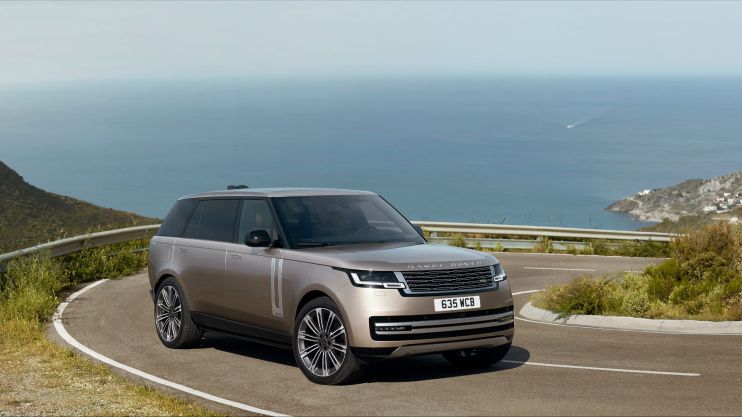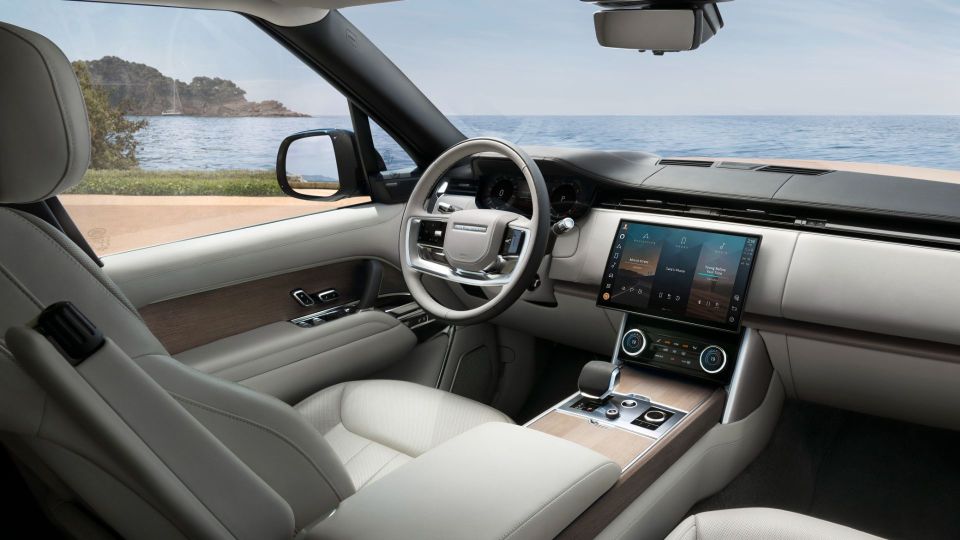Rover Rover 2022 review: Great Briton

The Range Rover has long been a car that doesn’t cost enough. It’s one of the few genuine automotive icons, and its peerless abilities make it the default choice for those seeking a luxury SUV.
Land Rover used to worry that the £100,000 Range Rover was a step too far. Customer demand soon put paid to that. The launch of rivals such as the Bentley Bentayga and Rolls-Royce Cullinan has provided a perfect opportunity to push the car upmarket.
So, praise be, you can now spend £200,000 on a Range Rover, if you so wish. And people will, because this fifth-generation model is little short of brilliant.
Seeing the light

It’s visually beautiful, for a start, with fanatical attention to detail. Every surface is impeccably crafted, and the way they play with the light is mesmerising.
The rear is especially interesting, with the ‘hidden’ lights integrated into an elegant, almost boat-tail design. It’s delectably luxurious, a masterclass under the watch of charismatic design director Professor Gerry McGovern. It makes a Cullinan look almost twee.
Mind you, if you live in a road with width restrictors, take note: it’s big. The car measures more than two metres across, even with door mirrors folded. With them out, it’s over 2.2 metres, plus more than five metres long.
Seven-up SUV

That’s all because it’s more spacious inside – so much so, you can choose a seven-seat Range Rover for the first time. Land Rover says all the seats are adult-sized, and getting into the third row won’t cost passengers any decorum, thanks to clever fold-away middle seats. However, it’s still best experienced in five-seat guise.
After all, you don’t want a gaggle of people onboard, disturbing the peace. Two up-front and two reclining on the lavish rear seats feels like enough. Passengers in the back get lots of gadgets to play with, including an electric cupholder.
Those in the front enjoy a regal seating position with a gloriously commanding view out, plus a vivid infotainment system. If you drive an older Range Rover, you won’t believe the transformation here.
A serene dream

My test car was – get this – a diesel. Yes, you can still buy them. But ignore the naysayers, for it actually makes perfect sense in a car like this. The 350hp 3.0-litre straight-six is creamily smooth, and hauls this 2.5-tonne machine to 62mph in 6.1 seconds. Yet it also returned a mind-boggling 38mpg while breezing from the Cotswolds to Chepstow.
Haters are gonna hate, but ignore them (although plug-in hybrid and pure electric alternatives are coming).
How does it drive? Oh, like a Range Rover: impeccably. The serenity and sense of wellbeing is all-encompassing. It’s not uncannily silent, like an electric car, but the background hum of the super-smooth engine merely seems to enhance the experience. A bit like the vibration-free noise of a car in the movies, when they are driving on a green screen.
Given its size, it’s pleasing to discover such accurate steering, allowing the Range Rover to be navigated with fingertip relaxation. The active anti-roll system doesn’t eradicate lean in corners, but controls it beautifully for a natural and elegant flow on twisting roads. And despite wheels similar in size to a small planet, the ride is impeccably cushioned and compliant. It’s a dream.
All things are relative

We went off-road, and it was so capable, it was actually boring. Then my colleague got out to take a picture, and couldn’t climb back in as the incline was so steep. Special mention goes to the rear-wheel steering, which makes the turning circle unnaturally tight; it will be as useful in car parks as on a hillside hairpin.
Really, I couldn’t find anything not to like. Ordinarily, the ‘but’ at the end would be the price. However, as the Range Rover still costs less than rival SUVs that it may well outclass, this surely makes it an unlikely automotive bargain.
Richard Aucock writes for Motoring Research
Range Rover Autobiography D350
PRICE: £122,375
POWER: 350hp
0-62MPH: 6.1sec
TOP SPEED: 145mph
FUEL ECONOMY: 35.6mpg
CO2 EMISSIONS: 208g/km